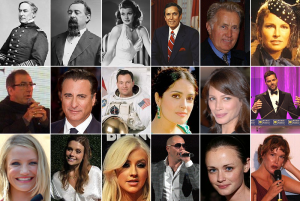
It has become common to see the term “Hispanic American” being used in scholarship as well as mainstream media. This representation of the community implies an underlying cultural homogeneity. But in reality there is much diversity within this classification on account of linguistic, social, political, economic and religious grounds. The following passages are toward supporting this thesis. The Hispanic American groups chosen for discussion are Mexican Americans, Cubans, Puerto Ricans and El Salvadorians.
Subtle differences in Language:
Although all the groups share the same language, which is Spanish, some discernible differences can be observed. For example, some groups use the word “sopa” to refer to a food item while the rest use it to denote soap. The unique geo-political circumstances of different Spanish speaking regions have contributed to the formation of regional dialects. For instance, Mexico being close to the United States of America has resulted in the importation of English words into common usage. So much so that, some cultural commentators call the Mexican language as Spanglish. (Hope Cheong, 2006)
Varied Political Participation:
Of all the four groups, Mexican Americans stand out in terms of their involvement in mainstream American politics. The dissenting voices of Mexican Americans were first heard during the civil rights movement of the 1960’s. Although African Americans were predominantly seen as the leaders of the movement, significant contributions were made by such Mexican American luminaries as V.Mendoza, Reies Lopez Tijerina and Rodolfo Gonzales. Their political activism ranged from basic rights for farm workers to rights of electoral franchise at all levels of governance. (Jokisch, 2006)
Parallels could be observed in Puerto Rican American history as well. One of the more recent immigrants to the country, Puerto Ricans are poorly represented in politics. However, to their credit, they succeeded in forming trade unions to demand for worker rights during the second half of the twentieth century. Given such an initiation, it is only natural that their worker movement graduated into a socialist one. Given the strong capitalist roots in America, this movement did not make much impact though.
Any description of Cuban Americans will have to be made in the context of Cuba’s hostile political relation with the United States. The primary reason for migration to their more affluent neighboring country is economic opportunity. Yet, the totalitarian and sometimes repressive regime of Fidel Castro would mean that the migrants are also political asylum seekers. Hence, the acculturated Americans view Cuban Americans as ‘outsiders’. This perception had not helped the community in their genuine efforts toward cultural assimilation. (Hope Cheong, 2006)
A recent survey found that most El Salvadorian Americans intend to go back home once the political situation stabilizes there. It would not be exaggeration to say that this community lives in a world of its own oblivious of the socio-political developments around them. Hence their political participation in the United States is most minimal. (Frykholm, 2007)